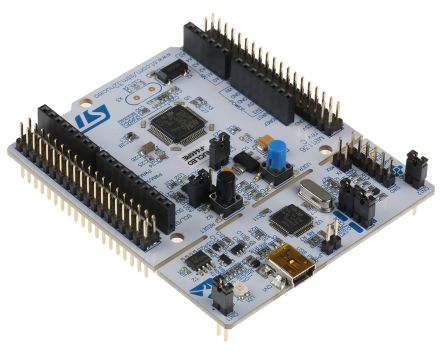
- #STM32 NUCLEO F401RE SCHEMATIC HOW TO#
- #STM32 NUCLEO F401RE SCHEMATIC SERIAL#
- #STM32 NUCLEO F401RE SCHEMATIC DRIVER#
- #STM32 NUCLEO F401RE SCHEMATIC FULL#
- #STM32 NUCLEO F401RE SCHEMATIC OFFLINE#
#STM32 NUCLEO F401RE SCHEMATIC SERIAL#
Serial Serial pc(SERIAL_TX,SERIAL_RX) problem. STEM Unique Fully Open Source Educational Robot - Apeiros Nucleo Repeated Start of I2C does not work. Ticker Weird Ticker Behavior Inside Class
#STM32 NUCLEO F401RE SCHEMATIC OFFLINE#
Offline CoIDE mbed offline compile F401RE HID reading doesn't work - nucleo STM32F401RE Nucleo Flashing and running STM Nucleo board in Linux SERIAL_TX SERIAL_TX SERIAL_RX: not recieving data from STM32F401 Quadrature Nucleo F401RE and Quadrature encoders The internal flash of the ST Nucleo F401RE is organized into sectors of. SevenSegmant_stopwatch sevenSegmant_stopwatch ST Nucleo Official Schematic, Reference Design and Pin Mapping are available on.

You need to log in to post a discussion Discussion topics Topic
#STM32 NUCLEO F401RE SCHEMATIC HOW TO#
This video shows how to get started with ARM mbed Integrated Development Environment using STM32 Nucleo platform: These headers give access to all STM32 pins.
#STM32 NUCLEO F401RE SCHEMATIC FULL#

The Nucleo_blink_led program will contain a “main.cpp” file and the mbed library. The default program name is Nucleo_blink_led. Open SW4STM32 and create a new C project: File New C Project Give it a name like 'STM32F4Discovery-Blinky' and from the Project Type list choose the Executable/Ac6 STM32 MCU Project. (Any other board can be used as well.) 1. Our First Nucleo ProgramĬlick “New” and a dialog opens up. This example will use an STM32F4 Discovery kit, which features an STM32F407VG microcontroller. The Nucleo F103RB board should now be visible:Ĭlick the board, then the “Select Platform” button to get started. Tick the ST Microelectronics checkbox to find the Nucleo-F103RB board quicker:Ĭlick the board and, on its info page which you will be redirected, click the “Add to your Mbed Compiler” button:Īfter the confirmation, go back to the compiler page and click the “Select Device” button on the upper-right corner again. Once you’re in the compiler page, click on the upper-right corner to add an Mbed-supported board: Go ahead and register now to use the online compiler. It’s an online compiler with a neat interface and follows Arduino coding standards. There are a couple of ways to program the STM32 Nucleo board but I found using Mbed is the easiest for beginners.

Inside the “drive” is a link to the Mbed website and a text file containing some info about the board.
#STM32 NUCLEO F401RE SCHEMATIC DRIVER#
If the driver installation is successful and the Nucleo board is connected to the desktop computer, it will act like a removable flash drive. Here it is attached to my STM32 Nucleo:ĭownload the driver for the STM32 board. The STM32 Nucleo boards by ST packs a lot more power than an Arduino UNO and has headers aligned the same way with the latter that makes it compatible with Arduino shields.įor this tutorial and the next, I will be using Seedstudio’s Grove Shield as it makes it easier to connect some of the devices I need.


 0 kommentar(er)
0 kommentar(er)
